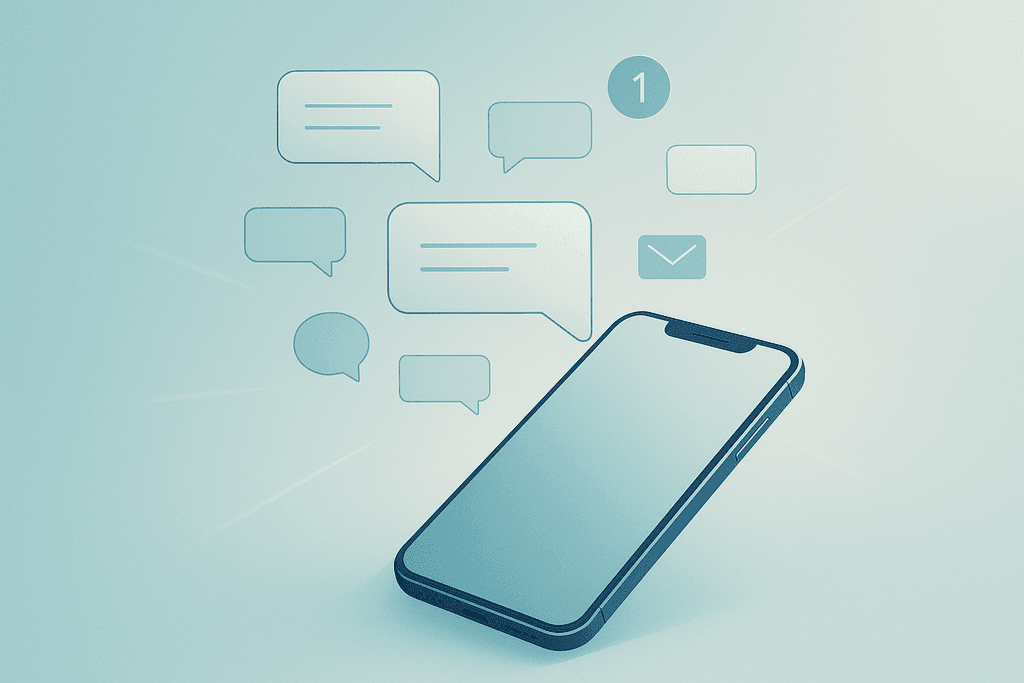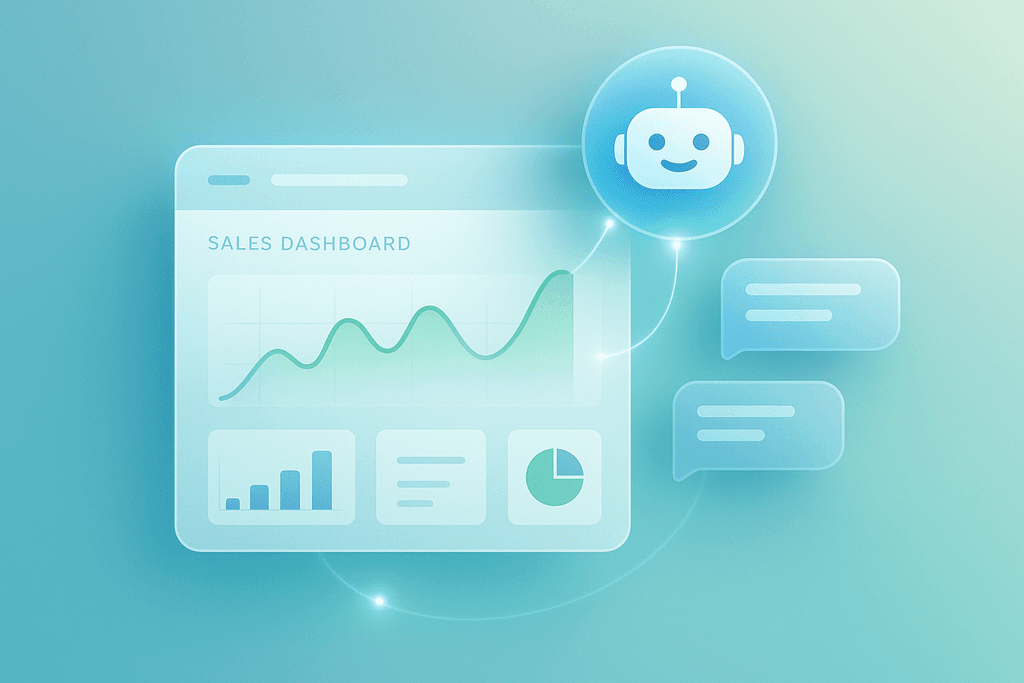When your website’s chat can see your team’s availability and book the meeting on the spot, prospects don’t slip away and your staff gets time back. This guide shows small business owners how to connect a chatbot with Calendly to automate booking, reduce no‑shows, and turn more conversations into confirmed appointments.
What is Calendly + chatbot integration?
A Calendly chatbot integration lets your website or voice assistant check real‑time availability, qualify visitors, and book confirmed appointments without back‑and‑forth emails. It works 24/7, collects the right details up front, and sends confirmations and reminders automatically.
- Shows only open time slots and prevents double‑booking.
- Routes the right meeting type based on the conversation (sales demo, service call, consultation).
- Captures context (needs, budget, location) to your CRM at the moment of booking.
- Triggers confirmations, reminders, and follow‑ups to lower no‑shows.
- 43% of workers spend 3+ hours per week just scheduling meetings (Calendly State of Meetings, 2024). Source: Calendly State of Meetings 2024.
- 48% of appointments are booked outside business hours, so 24/7 self‑service really matters (Square). Source: Square Appointments analysis.
- Targeted text reminders cut no‑shows by roughly 7–11% in a large randomized study (Kaiser Permanente, 2022). Source: Pragmatic randomized study (PubMed).
Why it matters for small businesses
Every missed call or slow email reply is a potential lost sale. Customers expect to book on their own time — often after hours — and they expect instant confirmation. An integrated chatbot meets them where they are, while your team focuses on delivering the service.
- Fewer drop‑offs: prospects can schedule the moment interest peaks.
- Lower admin load: less manual scheduling, rescheduling, and screening.
- More qualified meetings: the chatbot asks a few smart questions before offering times.
If you’re just getting started, begin with one high‑value meeting type (e.g., “15‑minute intro call”) and expand once you’ve proven the flow. Keep forms short — the chatbot can collect extra details conversationally after the time is locked.
How the integration works
At a high level, the chatbot reads availability from your scheduling tool, offers times, books the slot, and triggers confirmations — all in one conversation.
- Real‑time availability: The bot checks open slots for the right event type and timezone.
- Qualification: A few questions (need, location, budget) guide the visitor to the best calendar or meeting length.
- Booking: The bot collects name, email, phone, and locks the time; a confirmation is sent immediately.
- Reminders and follow‑ups: Automated reminders reduce no‑shows; the bot can also offer rescheduling links.
Two common connection methods
- Link + embedded page: Fastest. The bot presents your curated Calendly links based on answers and opens the booking interface inside the chat or a modal.
- API + webhooks: Most flexible. Use personal access tokens and webhooks to fetch availability and create bookings programmatically. See the Calendly API overview for how requests are authenticated and processed.
Small Business Chatbot supports connecting to your CRM and calendar stack so contacts, notes, and outcomes sync to one place. Explore current options on our integrations page.
Setup checklist
Use this checklist to go live confidently.
- Create one “anchor” event type (e.g., 15‑minute intro) with buffers and minimum notice times.
- Set working hours and time‑zone detection; add exceptions for holidays.
- Add 1–2 screening questions in the chatbot (industry, location, goal).
- Route by rules: new sales → owner’s calendar; support → service team; VIPs → special event link.
- Turn on email/SMS reminders and a friendly reschedule option.
- Map captured fields (name, email, phone, notes) to your CRM.
- Test edge cases: overlaps, last‑minute booking, time‑zone shifts, and rescheduling.
- Publish and monitor: track booked meetings, completion rates, and no‑shows weekly.
Conversation playbooks that book more meetings
- Fast‑track demo: “Are you exploring for yourself or your team?” → “Great, 15 or 30 minutes?” → present next 5 slots.
- Service triage: “Are you an existing customer?” If yes → direct to service calendar; if no → pre‑qualify and offer consult times.
- Location‑aware: Ask ZIP code first to assign the closest rep’s calendar automatically.
- No‑show recovery: If a visitor returns after missing a meeting, proactively offer a reschedule link with the next earliest time.
Measure impact and ROI
Start with a simple baseline and improve from there.
- Booking rate = meetings booked / qualified chat conversations.
- Speed‑to‑meeting = average hours from first chat to scheduled time.
- No‑show rate before vs. after enabling reminders (evidence shows targeted reminders reduce no‑shows; see Kaiser Permanente, 2022, cited above).
- Time saved = weekly hours previously spent scheduling. Research shows many workers spend several hours a week on scheduling tasks (Calendly, 2024, cited above).
Share the wins with your team — and your future customers. For real‑world outcomes from teams using AI assistants, see our customer reviews.
Troubleshooting and best practices
Most booking hiccups come down to availability rules or conflicting calendars. A few tips:
- Keep one source of truth: Ensure all personal and shared calendars that affect availability are connected to your scheduling tool.
- Use buffers generously: Add prep and travel buffers so back‑to‑back slots don’t appear unrealistically tight.
- Set minimum notice: Prevent last‑minute bookings that lead to no‑shows or rushed calls.
- Respect time zones: Let the tool detect invitee time zones; lock to local time for in‑person visits.
- Shorten the path: Offer your top 3–5 time options in chat to reduce decision fatigue.
Frequently asked questions for Calendly chatbot integration
1) Do I need developers to connect a chatbot to Calendly?
No. Many teams start by sharing curated scheduling links through the chatbot. If you want real‑time slot selection inside the chat, you can use APIs and webhooks. Calendly authenticates via personal access tokens and processes requests per its API design (see Calendly API overview cited above).
2) Can the bot prevent double bookings?
Yes. Because availability is pulled from your connected calendars, times shown are bookable and blocked immediately when selected.
3) How do I reduce no‑shows?
Enable email/SMS reminders, add clear prep instructions, and offer an easy reschedule path. Evidence from a large randomized study shows targeted text reminders reduce no‑shows by roughly 7–11% (Kaiser Permanente, 2022; see PubMed citation above).
4) Will this work if most of my customers contact us after hours?
Absolutely. Analyses from Square show nearly half of appointments are booked outside business hours, so 24/7 self‑service is important (Square analysis cited above).
5) How does this integrate with my CRM?
With Small Business Chatbot, contact details and conversation context can sync to popular CRMs automatically. Explore options on our integrations page.
6) What about phone calls?
If many inquiries start by phone, pair your web chatbot with our AI Voice Agent to answer calls, route leads, and book appointments from voicemails or live conversations.
7) Is Calendly the only scheduling tool that works?
No. This guide focuses on Calendly because it’s widely used and has mature APIs. The same integration approach applies to other scheduling tools that expose links or APIs.
Next steps
Ready to offer “book now” from every conversation? Small Business Chatbot makes it simple to connect your tech stack and launch an assistant that books meetings for you.
Last updated: September 29, 2025.



